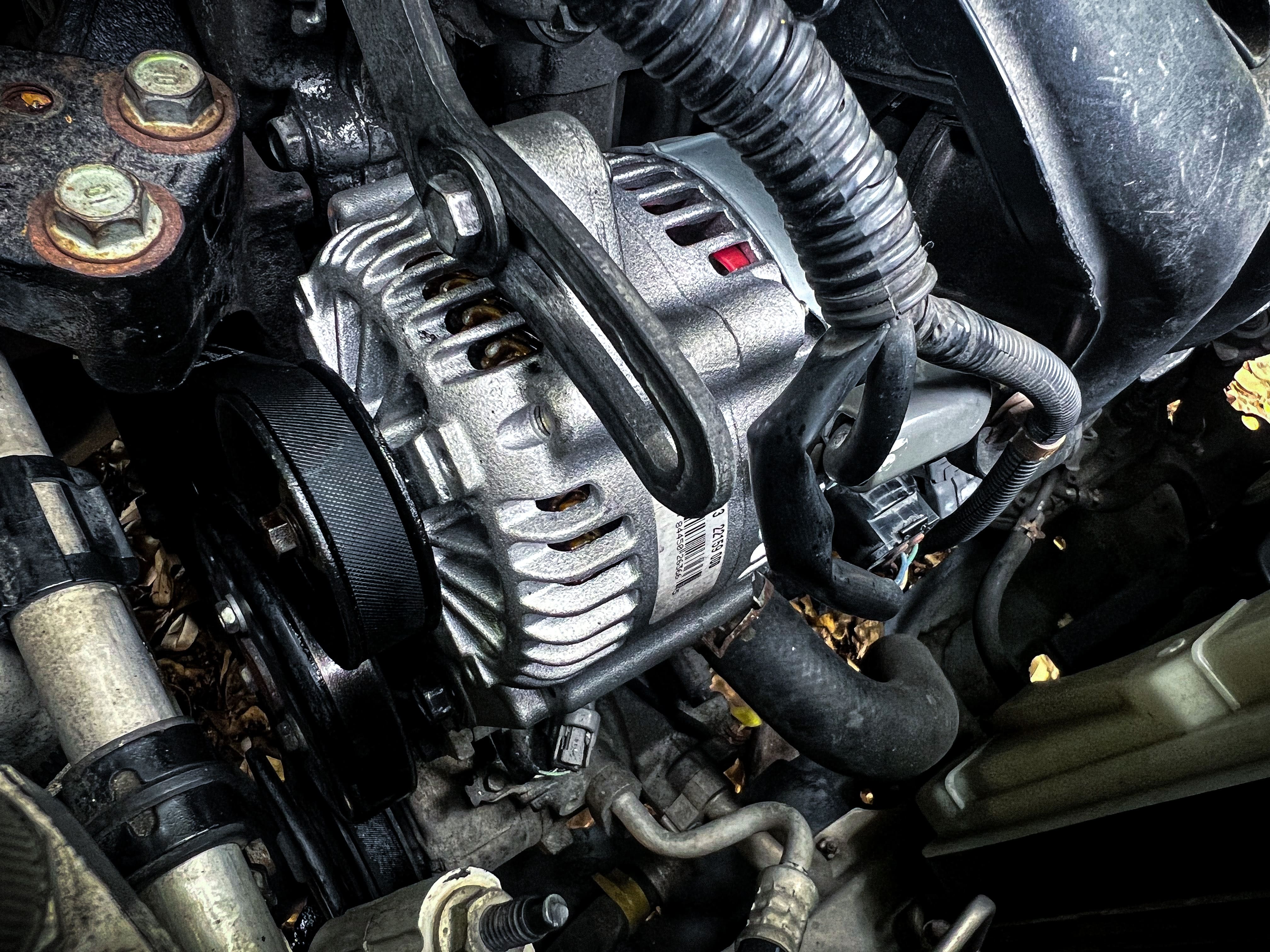To determine if a battery is bad, check for signs of corrosion or swelling on the battery, test the battery voltage, and observe the performance of devices powered by the battery. If the battery shows physical damage, has a low voltage reading, or fails to power devices effectively, it may be a sign of a bad battery.
Checking the condition of a battery is crucial to ensure optimal performance and prevent unexpected failures. Whether you are dealing with a car battery, laptop battery, or any other type of battery, understanding how to recognize a bad battery is essential.
By being aware of certain indicators, you can identify if a battery needs to be replaced or repaired, saving you from inconvenience and potential damage. We will discuss the key signs that can help you determine if a battery is bad, allowing you to take timely action and maintain the efficiency of your devices.

Credit: www.abyssbattery.com
Common Signs Of Bad Battery
A car’s battery is its lifeline, providing the necessary power to start the engine and keep all electrical systems running smoothly. However, like any mechanical component, batteries can deteriorate over time and eventually become ineffective. It is crucial to identify the common signs of a bad battery to avoid unexpected breakdowns and inconvenience. Here are three key indicators that can help you determine if your battery is on its last legs:
Slow Engine Crank
One of the most noticeable signs of a bad battery is a sluggish engine crank when starting your vehicle. If you hear a slow, labored noise and the engine takes longer than usual to ignite, it could be a sign of a low battery. This occurs because the battery loses its capacity to deliver a strong current to the engine, causing the starter motor to work harder and slower. If this problem persists, it is wise to have your battery checked by a professional to prevent unexpected breakdowns.
Dashboard Warning Lights
Another telltale sign of a dying battery is the appearance of dashboard warning lights. When the battery’s charge drops significantly, it can trigger warning lights such as the battery indicator, check engine light, or even the ABS warning light. These lights serve as a warning that there is an underlying problem with the electrical system, and it is likely due to a weakening battery. Ignoring these warning lights may lead to further damage and expensive repairs, so it is essential to address the battery issue promptly.
Electrical System Malfunctions
A failing battery can also cause various electrical system malfunctions in your vehicle. If you experience unexpected power fluctuations, flickering lights, or difficulties operating electrical components such as power windows or audio systems, it is highly probable that the battery is at fault. As the battery’s charge diminishes, it becomes unable to supply the necessary power to support these systems, resulting in erratic behavior. Regularly monitoring the performance of your vehicle’s electrical systems can help you identify battery-related issues before they escalate.
Being aware of these common signs can help you determine if your car’s battery is on the verge of failure. Remember, a bad battery can quickly go from a minor inconvenience to a major problem, leaving you stranded on the side of the road. If you notice slow engine cranks, dashboard warning lights, or electrical system malfunctions, it is crucial to take action and have your battery inspected or replaced, ensuring a reliable and trouble-free journey.
Effects Of A Bad Battery
A bad battery can cause a multitude of problems in your vehicle, affecting various aspects of its performance. It is important to be aware of the signs that indicate a bad battery so that you can address the issue promptly, preventing further complications. In this article, we will explore the effects of a bad battery and how it can impact your vehicle’s electrical system and starting capabilities.
Electrical System Issues
A bad battery can lead to a range of electrical system issues in your vehicle. The battery is responsible for providing the necessary power to various electrical components, such as lights, radio, power windows, and more. When the battery is weak or failing, these components may not function properly or may exhibit intermittent issues.
- Dimming Lights: One of the common signs of a bad battery is dimming headlights or interior lights. If you notice that your lights are not as bright as they used to be, it may indicate a battery problem.
- Electrical Malfunctions: A bad battery can also contribute to electrical malfunctions in your vehicle. You may experience issues with the power windows, radio, or dashboard electronics. These malfunctions may be sporadic or occur consistently.
- Frequent Blown Fuses: If your vehicle’s fuses are frequently blowing, it could be a result of a bad battery. A weak battery may cause voltage fluctuations that can overload the electrical system, leading to blown fuses.
Starting Problems
One of the most common effects of a bad battery is starting problems. The battery is responsible for providing the initial power needed to start the engine. When the battery is faulty, you may encounter difficulties getting your vehicle to start.
- Slow Cranking: If your engine cranks slower than usual or takes a longer time to start, it may be an indication of a weak battery. This slow cranking is often accompanied by a clicking sound.
- No Start: In severe cases, a bad battery may result in a complete failure to start the engine. You might turn the ignition key, but nothing happens. This is often accompanied by silence or a brief clicking noise.
- Intermittent Starting Issues: Sometimes, a bad battery may cause intermittent starting problems. The engine may start fine on some occasions, while on others, it may struggle or fail to start altogether. These inconsistencies can be frustrating and indicate a battery that is on its way out.
To avoid being stranded or facing unnecessary inconveniences, it is essential to be aware of the effects of a bad battery. By recognizing signs such as electrical system issues and starting problems, you can take appropriate action and replace your battery to ensure the smooth functioning of your vehicle.
Testing A Battery
Regular testing of a battery is crucial to determine whether it is functioning properly. There are various methods to test a battery, with two popular options being using a multimeter and load testing.
Using A Multimeter
Using a multimeter is a common method to test a battery’s voltage. Here are the steps to perform the test:
- Set the multimeter to the DC voltage setting.
- Connect the positive (red) probe to the battery’s positive terminal and the negative (black) probe to the negative terminal.
- Read the voltage displayed on the multimeter. A fully charged 12-volt battery typically shows 12.6 to 12.8 volts.
- If the reading is significantly lower, the battery may be defective.
Load Testing
Load testing assesses a battery’s ability to deliver current under load. Here’s a simple procedure for load testing:
- Connect a load tester to the battery following the manufacturer’s instructions.
- Apply the load for a specified duration and monitor the battery’s voltage. A significant drop indicates that the battery is unable to sustain the required power and may need replacement.

Credit: shop.advanceautoparts.com
Potential Solutions For A Bad Battery
Recharging
Plug the battery into a charger and let it regain its power slowly.
Battery Replacement
If recharging doesn’t work, consider getting a new battery for your device.
Maintenance Tips For Long Battery Life
Regular Inspection
Check battery regularly to detect issues early.
Proper Terminal Cleaning
Keep terminals clean to ensure optimal performance.

Credit: www.ymfcarparts.co.uk
Frequently Asked Questions For How To Know If Battery Is Bad
How Can You Tell If Car Battery Needs Replacing?
You can tell if the car battery needs replacing by checking for slow engine cranking, dimming headlights, and a dashboard warning light. Additionally, a pungent smell or visible corrosion on the battery terminals are signs of a dying battery. Regular maintenance and testing can prevent unexpected breakdowns.
What Are The Signs Of A Bad Battery?
Signs of a bad battery include difficulty starting your vehicle, dim headlights, a weak or dead battery, and frequent jump starts. Other indications include electrical issues, such as malfunctioning power accessories or a battery warning light. If you experience any of these symptoms, it may be time to replace your battery.
How Can I Test If My Battery Is Bad?
To test if your battery is bad, you can perform a voltage test using a multimeter. Connect the positive and negative leads of the multimeter to the corresponding terminals on the battery. If the voltage reading is significantly lower than the specified range, it indicates a bad battery.
How Do You Know If Your Alternator Is Bad Or Bad Battery?
You can check if the alternator is bad by testing the battery with a voltmeter. If the battery voltage is below 12. 6V, it may be the alternator. If the battery is over 12. 6V, the alternator might be fine and the issue could be the battery.
Conclusion
Noticing early signs of a failing battery can save you time and money in the long run. By paying attention to common symptoms like slow start-ups and dimming lights, you can diagnose battery issues early. Regular maintenance and timely replacements can help you avoid unexpected breakdowns and ensure a smooth driving experience.